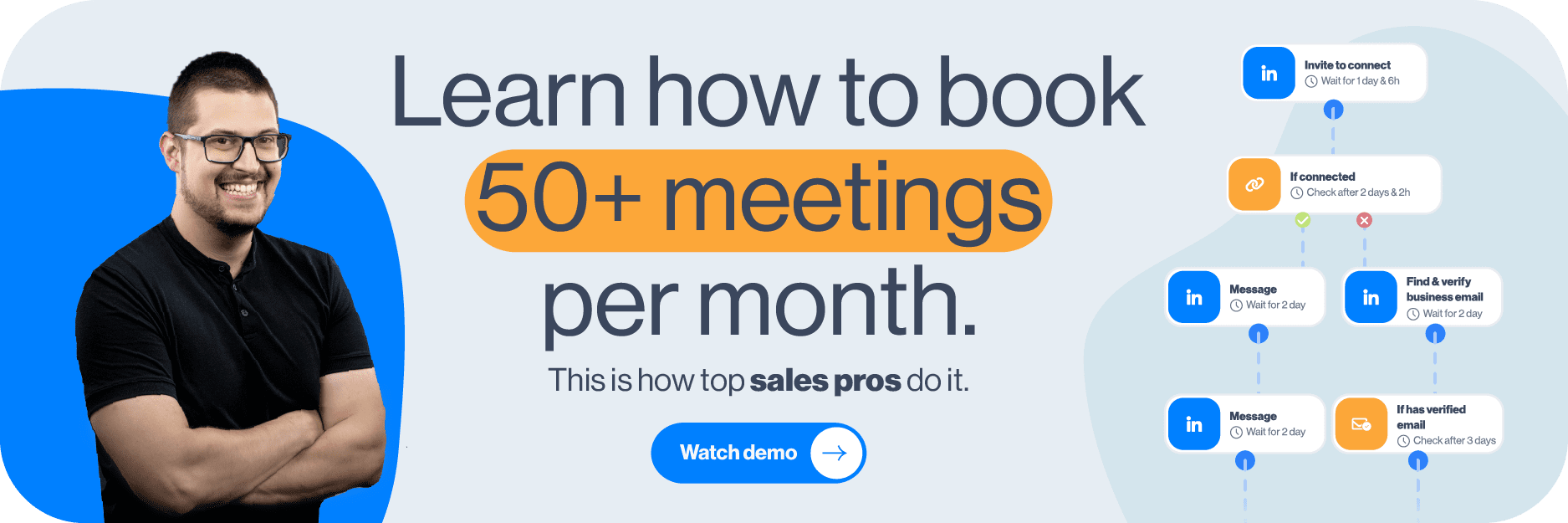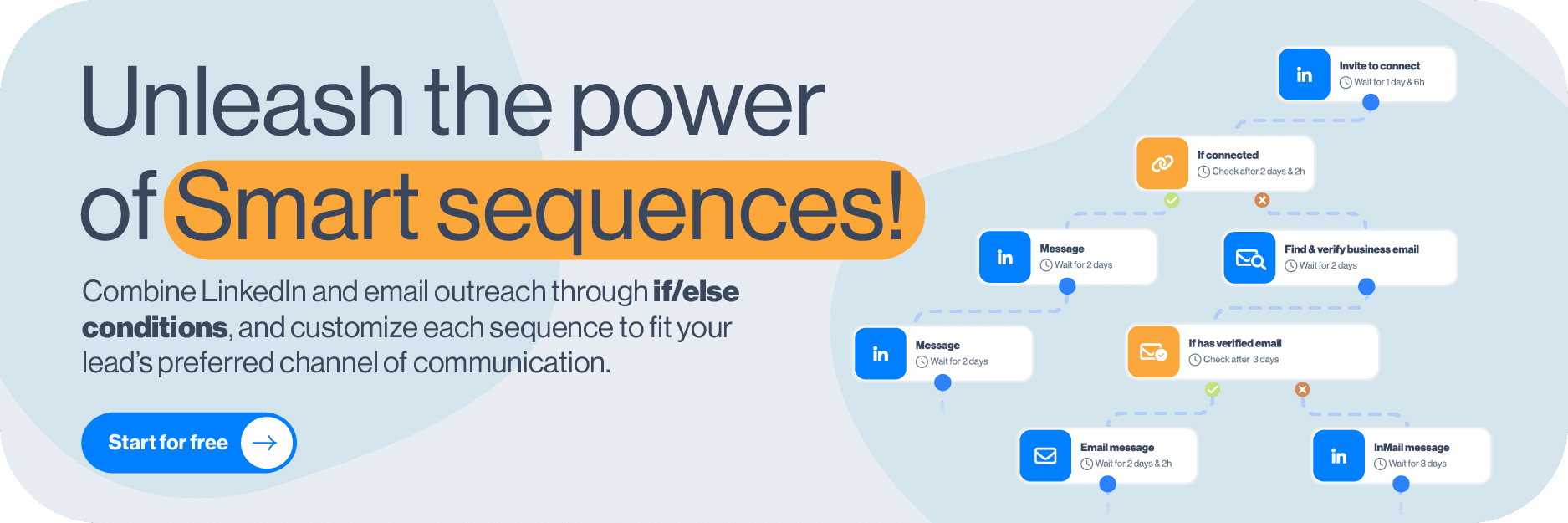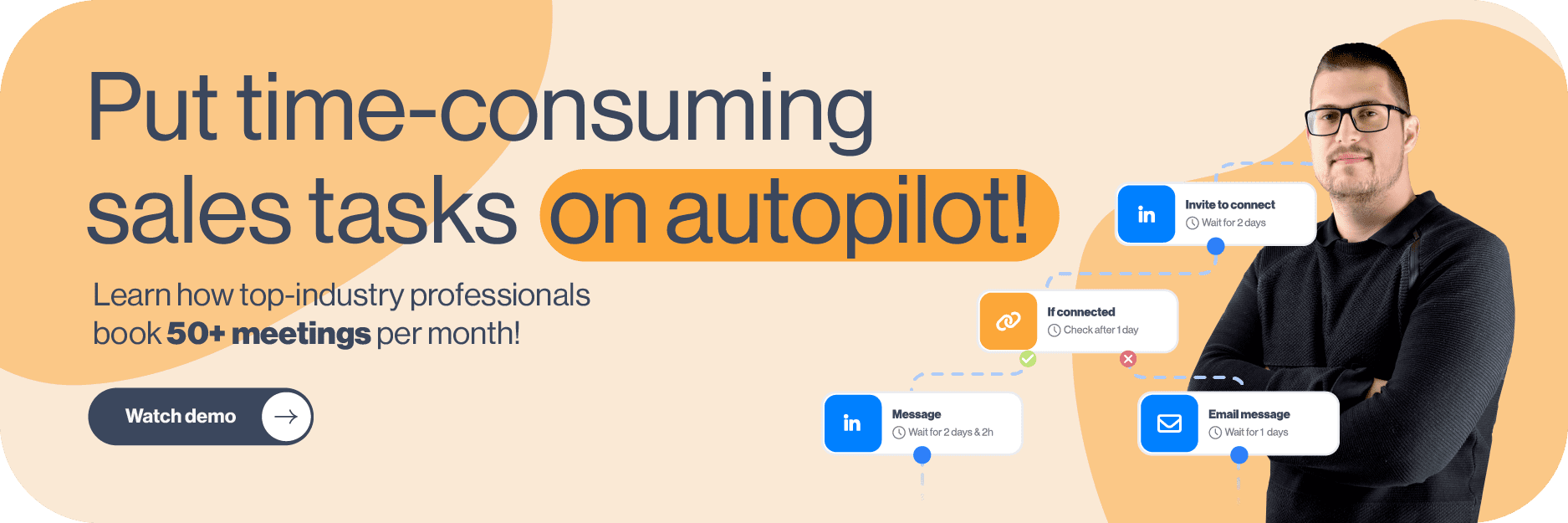Did you know that businesses that use a multichannel outreach strategy witness an increase in customer engagement by 287%?
Most of us live, work, and shop in the online world, so nowadays, outreach is no exception. Whether in sales or marketing, you target people out of the blue and try to catch their attention, book more meetings, and ultimately close more deals via email and other communication channels.
Implementing a strong targeted outreach strategy can help with lead generation, turning those leads into satisfied customers, and nurturing relationships with them later on.
But how to turn those cold targets into warm leads and convert them into clients? It’s time to learn about the best outreach sequences. Our marketing team has done the research, so you don’t have to, and we’ll go over:
- What are outreach sequences
- 5 types of sequence messages
- 4 best outreach sequence examples
- Outreach sequence best practices
We’ve got a lot to cover, so grab your reading glasses, and let’s begin. 👓
What are outreach sequences and how do they work?
An outreach sequence is a planned series of actions and follow-ups carried through one or multiple communication channels that aims to connect with potential leads, customers, or clients. The goal is to build relationships with leads, generate interest, or drive a specific action.
For example, if you’re outreaching via email, the first email would be introductory. If there’s no response, you keep sending follow-ups that contain more information and value with each message.
Depending on the target audience, their interests and preferences, and the overall strategy, you can create outreach sequences using:
- Social media (LinkedIn, Instagram, Twitter, etc.)
- Phone calls
- Direct mail
The best outreach sequences aim to add multiple touchpoints with prospects and combine different channels. This means that each message in a sequence is personalized and tailored to address the prospect's previous action in a sequence.
How to create the best outreach sequences?
The main characteristics of the best outreach sequence are their structure and the strategy behind the intended communication. The goal is to gradually build your outreach sequence and drive engagement with your target audience.
Here are key steps of this process:
- Identifying goals - Pinpoint your outreach objectives, find your target audience, and understand their wants, needs, and challenges before crafting a tailored outreach sequence.
- Sequence building and design - Create a series of messages and follow-ups using one or more channels that seamlessly guide them toward taking action.
- Make sure to personalize messages according to previous research and actions.
- Timing and frequency - Your main goal should not be too pushy or intrusive, so make sure to space out messages correctly and adjust the frequency accordingly.
- Execution - Reach out to your leads manually. However, our advice is to automate outreach sequences for the best results and efficiency. Personalize and schedule, and then let the tool do the work for you, saving you hours of manual work.
- Analyzing and optimizing - After the sequence begins running, your job is to track engagement and look at metrics closely (open rates, click-through rates, response rates, and conversion rates) to determine whether your sequence is working or not. Make sure to keep optimizing for better outreach results.
Now that we know the basics of the outreach process, let’s look at our tool Skylead, so you can see firsthand how to create and automate the best outreach sequences. 👇
Automate your outreach sequences
How to automate your outreach sequences? Glad you asked. Introducing Skylead’s first-to-market smart sequences. As a LinkedIn automation and email outreach software, we strongly believe in the multichannel approach. That's why you can combine both of these channels in our sequence builder. Our smart sequences help:
- Save up to 11+ hours of manual work per week.
- Book 3x more meetings.
- Reach a higher number of quality leads in less time.
- Increase response rates with our in-app hyper personalization feature, and more.
What makes Skylead’s Smart sequences special is that you can combine LinkedIn and email action with if/else conditions. This will help you get to your prospects one way or the other while maximizing touchpoints with leads. You can use all Skylead prime features inside these sequences to help with a more streamlined outreach. This includes:
- Email finder & verifier - Helps you find your leads’ double-verified business emails without breaking the outreach flow, at no extra cost, and with no 3rd party tools.
- Image & GIF personalization - Adds an extra visual touch to your outreach, making each message tailored to your leads’ interests and personal information. Plus, it increases the response rate.
- A/B testing - You can test up to 5 variants of copy to determine which approach works best for which leads.
Now, let’s create a campaign together to see how it works. It's as easy as 1, 2, 3…
Skylead Smart sequences
1. First, click the “Create new campaign” button.
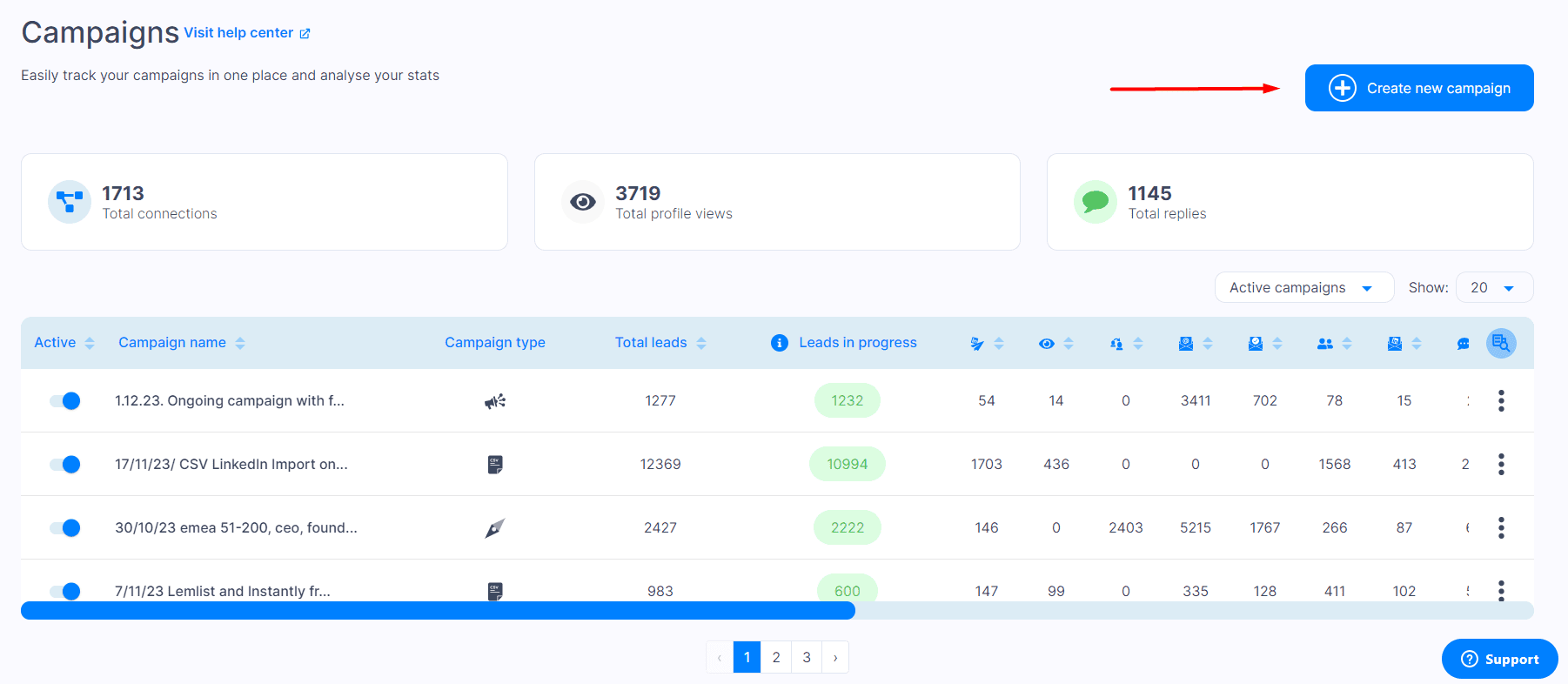
2. Second, choose a lead source. This is where Skylead pulls all your gathered leads from.
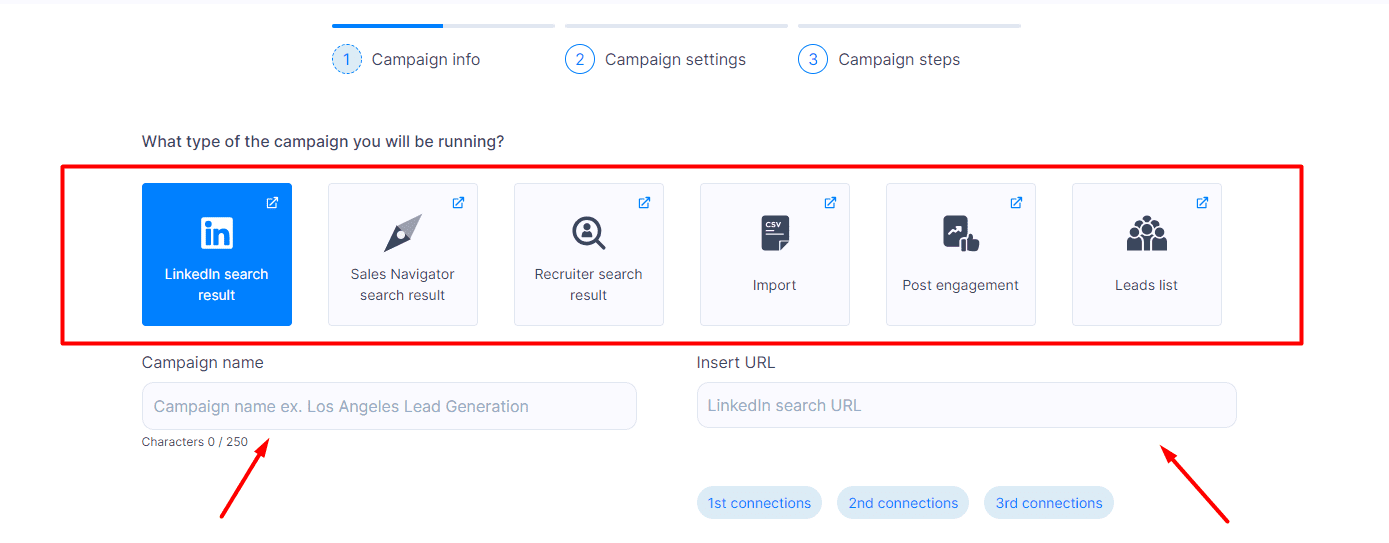
3. Third, adjust your campaign settings and hit the “Create sequence” button.
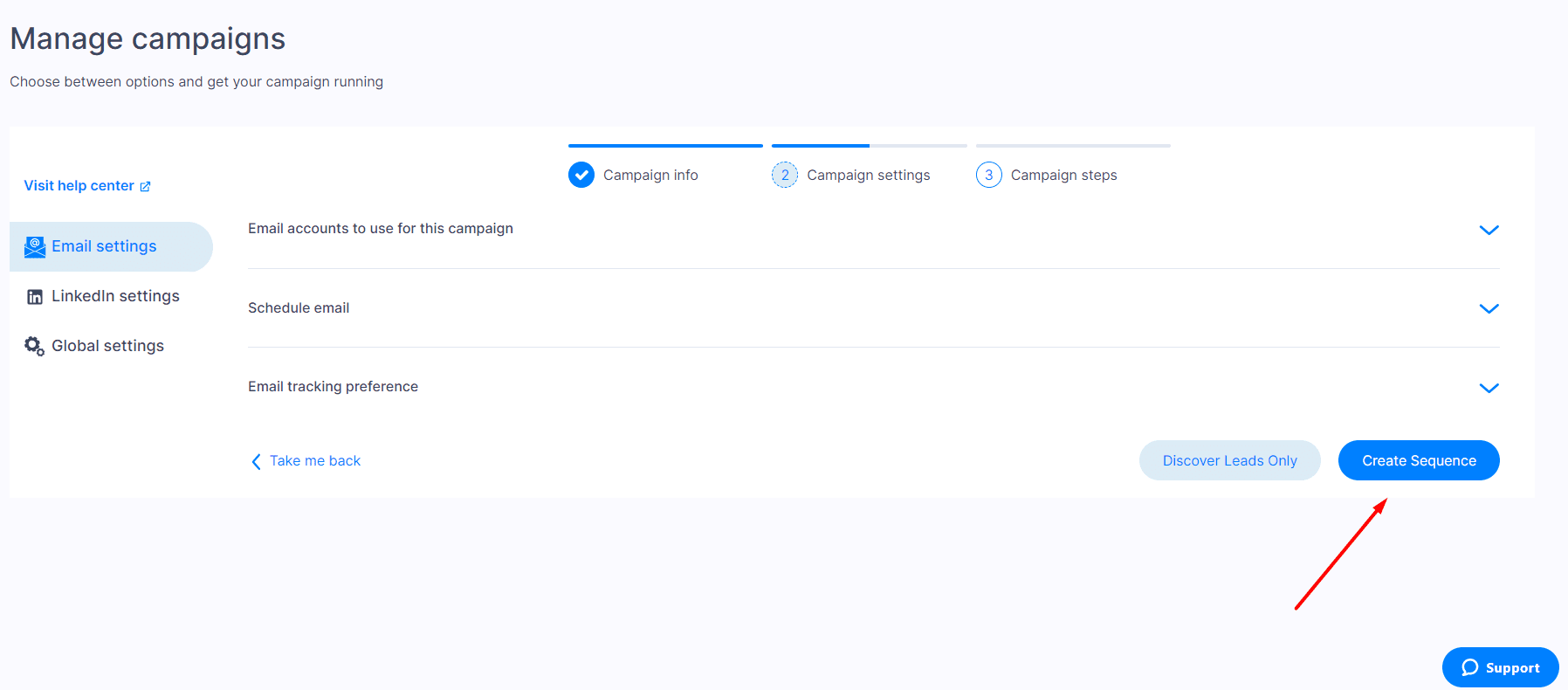
To create a smart outreach sequence, drag and drop the desired actions and conditions and create a coherent outreach flow. Here’s what a simple smart sequence looks like 👇
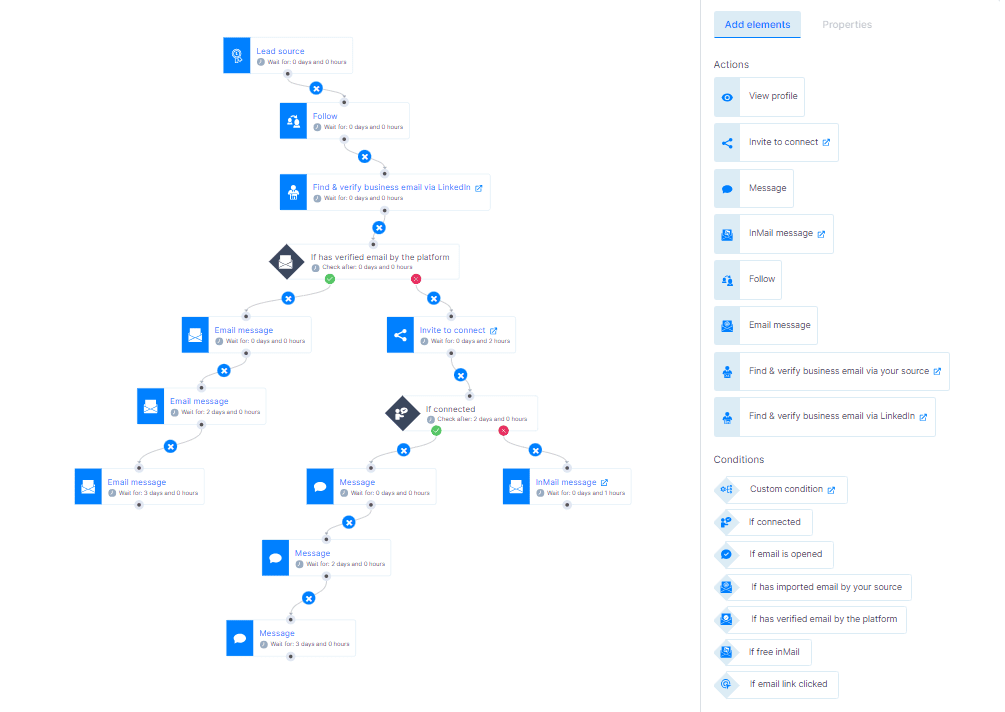
Now that you have a tool that does all this, plus a little bit more, you’re one step closer to building one of the best outreach sequences out there. But before you start creating your outreach flow, let’s look at sequence message types and review tested and proven sequence examples.
5 Types of sequence messages with examples
1. Educating Messages
When talking to prospects who are still not ready to buy, register, or become clients, you can create and send educating messages. These messages aim to help prospects learn about your product/service and show them how your product can fix their pain points and challenges. The goal is to establish trust and encourage leads to take the desired action.
Here’s an example of a LinkedIn and email educating message:
LinkedIn connection request
Hi {{firstName}},
Ever felt like you needed magic to solve {{painPoint}} at {{Company}}? ✨
{{product/service}} makes these challenges disappear.
You can:
1. Increase {{metric}} by {{number}}%
2. {{benefit}}
We’re here if and when you’re ready to experience the magic.
Until then, best spells!
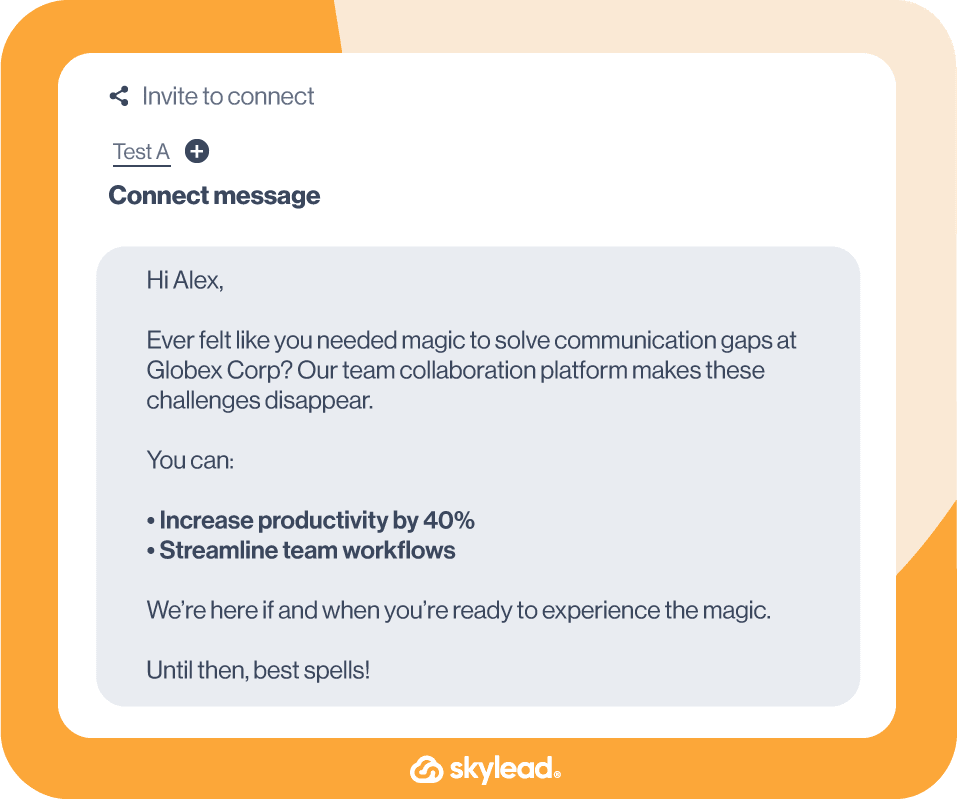
Email message
Subject: Would you like magic to solve your {{painPoint}}? ✨
Hi {{firstName}},
Ever wished for a magic wand for {{painPoint}} at {{companyName}}?
Meet {{solutionName}}—not magic, but close.
Here's what makes {{product/Service}} magical:
1. Eliminates {{painPoint}} and gets your team back on track to success
2. Increases {{metric}} by {{number}}%
Curious? Let’s talk so you can:
- See the magic in action
- Receive bite-sized insights & case studies
- Test-drive with zero fuss at zero cost.
What’s your choice?
Cheers!
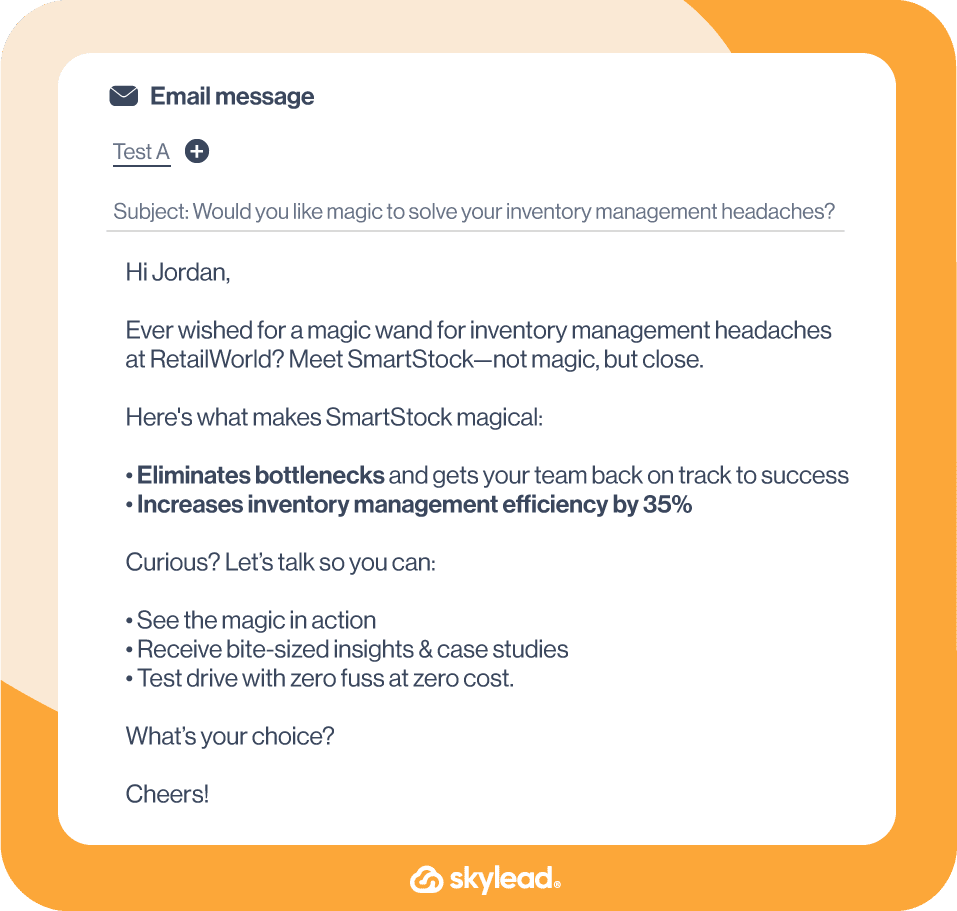
2. Messages that build interest
Engagement messages are the most common in cold outreach. Sequences built with engagement messages aim to invoke a reaction from your prospect. Your goal with these messages should be to keep them engaged and get them to build interest in your product/service gradually.
Here’s an example of a LinkedIn and email messages that build interest:
LinkedIn connection request
Hi {{firstName}},
Ever imagine transforming {{challenge}} into an art form?
Here at {{product/Service}}, we are blending technology and creativity to craft masterpieces.
Curious to paint a brighter future together? Let’s connect!
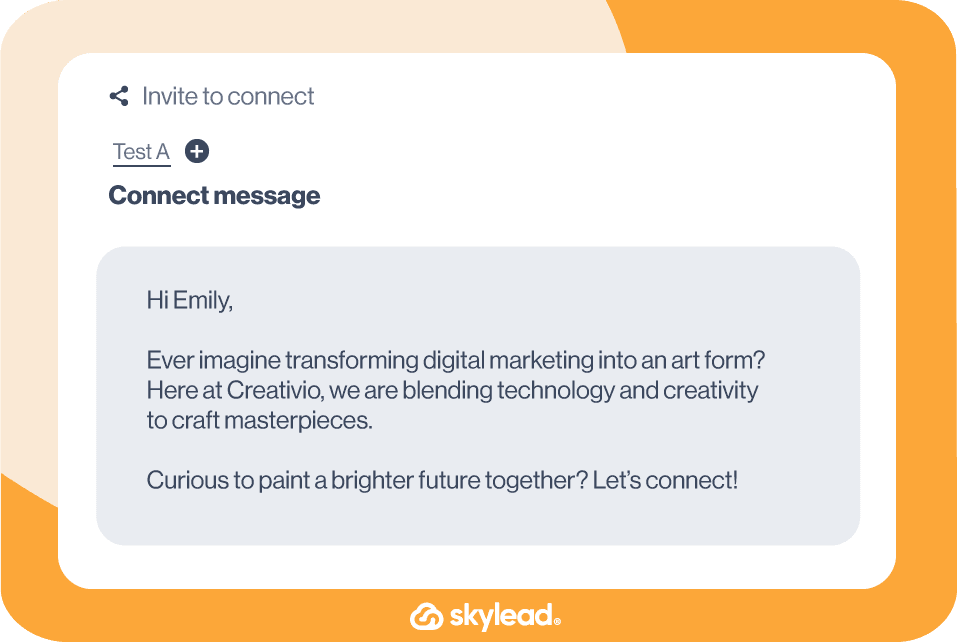
Email message
Subject: Art Meets {{challenge}} 🎨
Hi {{firstName}},
Imagine turning {{challenge}} into art. That's what we do with {{product/Service}}. I’m {{yourName}}, and I’m mixing tech and creativity to craft solutions that aren't just effective—they're inspirational.
We offer {{solution1}} and {{solution2}} to {{benefit}}.
How about a quick chat to sketch out possibilities?
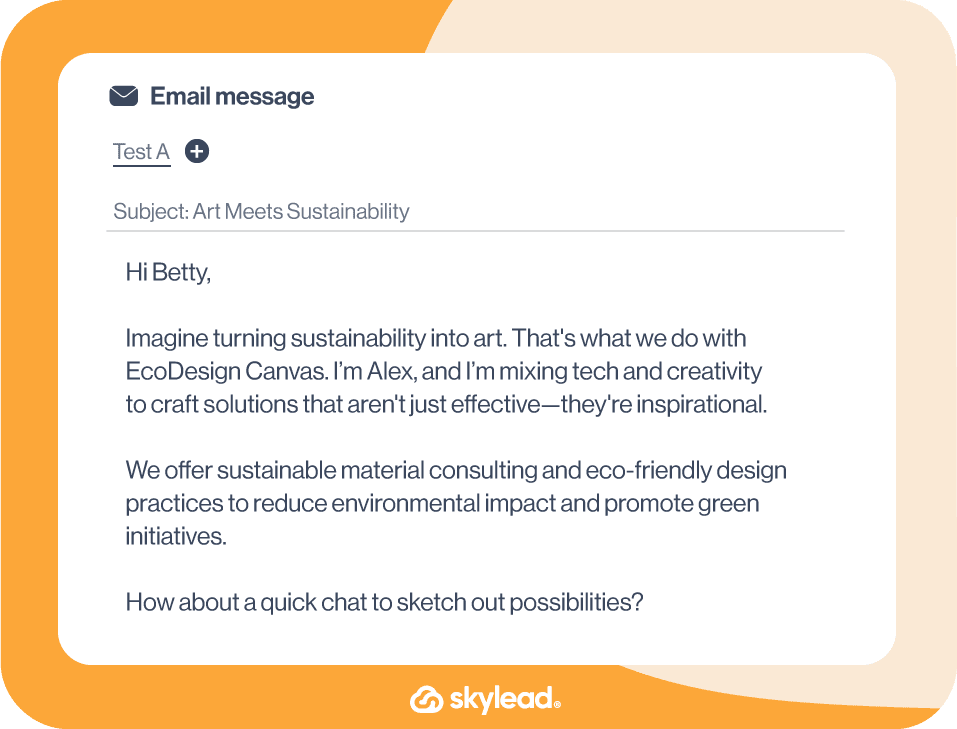
3. Competitor analysis messages
If you plan to talk about the competition, the trick is to give them a simple competitor analysis and show them how they’re getting these results. Then, emphasize how your product/service can help achieve said benefits. Then finish off with a simple and clear CTA that leads the prospect to a particular action, like scheduling a meeting, booking a call, sending a demo link, etc.
Here’s an example of a LinkedIn and email competitor analysis message:
LinkedIn InMail message
Subject: Ready to Outshine {{competitorTool}}? 🚀
Hi {{firstName}},
Ever wondered why {{competitorName}} leads in {{industry}}? Our audit reveals their key strategies:
{{Describe their approach to key strategy 1}}.
{{Describe their excellence in key strategy 2}}.
Here’s what you can do to get a quick win over them:
{{Your Offer - Task 1}} to elevate your {{result}}.
{{Your Offer - Task 2}} to boost {{specific outcome}}.
Interested in outpacing {{competitorName}}?
Let's discuss actionable insights in a brief call.

Email message
Subject: We cracked {{competitorName}} {{industry}} strategy 🚀
If you consider {{competitorName}} a competitor, then you'll definitely want to check out this short audit.
{{Analyze competitor's publicly available workflows or strategies and emphasize what they are doing right.}}
Proposition:
If you wish to surpass competitor name and get a bigger market share, you'll need to:
{{fWhat you offer - task 1}}
{{fWhat you offer - task 2}}
And this is precisely what we can help you with!
If you want to rise above your competition, let's schedule a quick call and see how we can get you there.
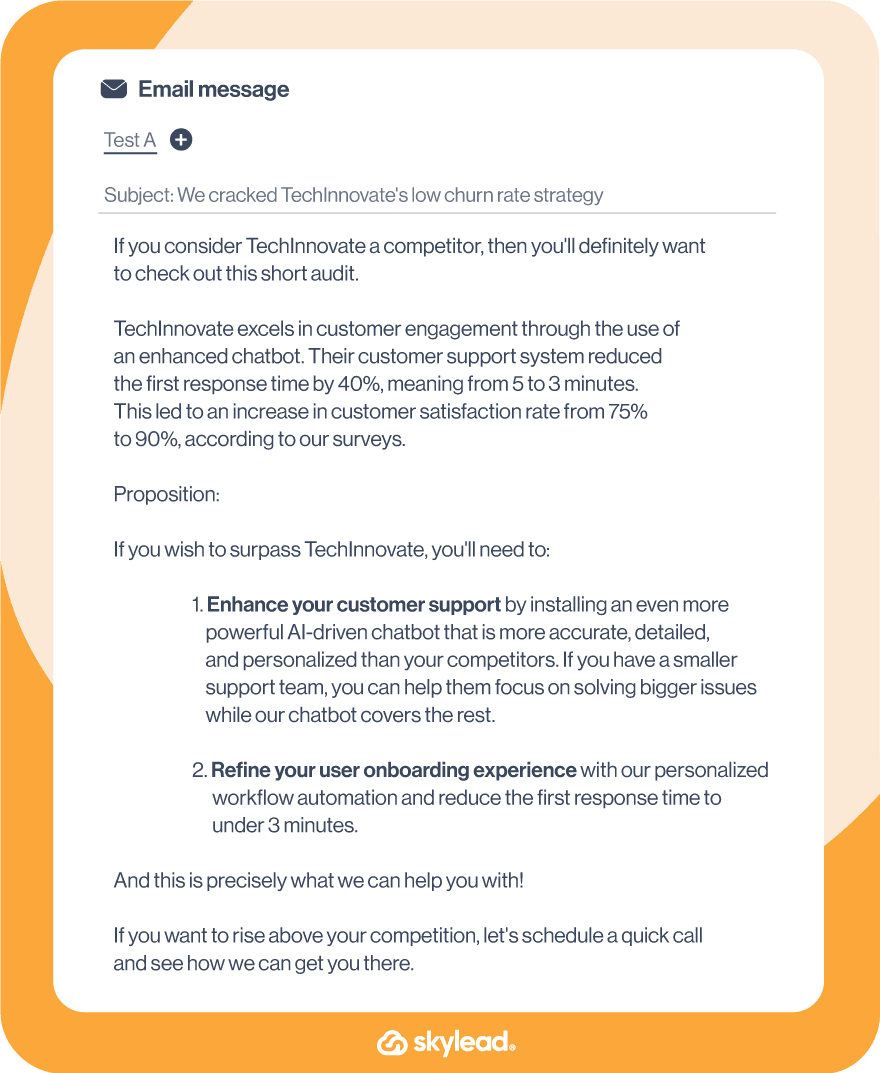
4. Follow-up messages
If your prospect didn’t respond to your first message, all you need is a follow-up after no response. A follow-up is a crucial part of an outreach sequence, and it’s necessary in order to give your prospect a gentle reminder of your existence and to lead them further down the buyer’s journey.
The goal is to keep in touch with your prospects and give them the right kind of motivation to respond to you.
Here’s an example of a LinkedIn and email follow-up message:
LinkedIn message
Hi {{firstName}},
Just following up on my previous message about how tackling {{challenge}} can feel like a steep climb. Imagine {{product/service}} as your personal helicopter, offering a swift lift to the top, bypassing those obstacles effortlessly.
Still curious to fly above the challenges? Let’s schedule that demo and start soaring together.
Looking forward to your response.
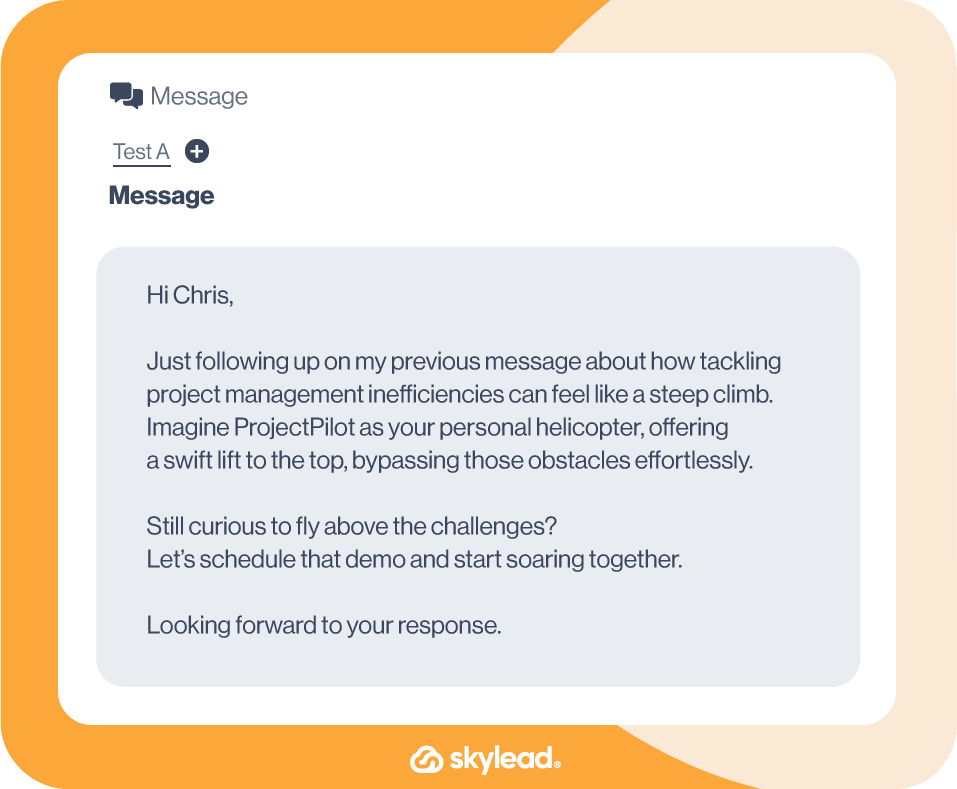
Email message
Subject: Ready to Soar Above {{challenge}}? 🚁
Hi {{firstName}},
Just touching base following my previous message about transforming your approach to {{challenge}}. Think of {{product/service}} as your on-demand helicopter, ready to take you to the top without the climb.
Are you ready to explore how we can elevate your journey with a brief demo?
Eager to see your ascent!
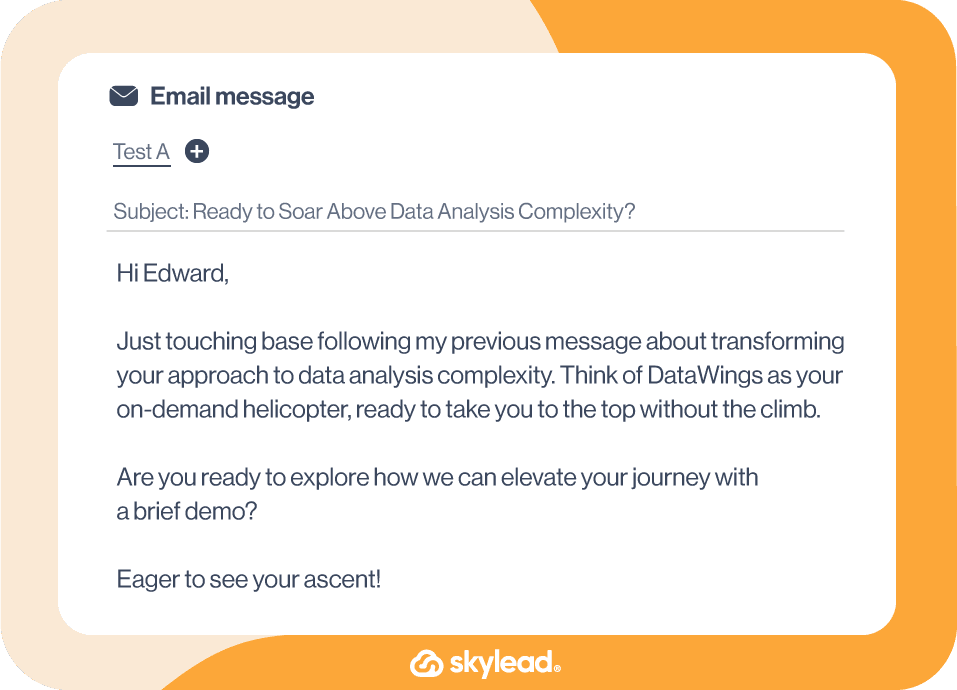
5. Re-engagement messages
Sometimes, prospects lose interest, change their email addresses or they would like to revisit your conversation in a few months. In these cases, you can do two things: in the first, send a re-engagement message to restart the conversation. In the second case, use Skylead’s Find & verify business email feature to get to your prospect's new email address and then send the re-engagement message. Convenient, right?
Here’s an example of a LinkedIn and email re-engagement messages:
LinkedIn message
Hi {{firstName}},
Long time no chat! 🕰️ {{product/Service}} has evolved since we last spoke, unlocking new ways to tackle {{challenge}}.
Curious about the updates? Let's dive back in with a quick demo or chat.
Looking forward to reconnecting!
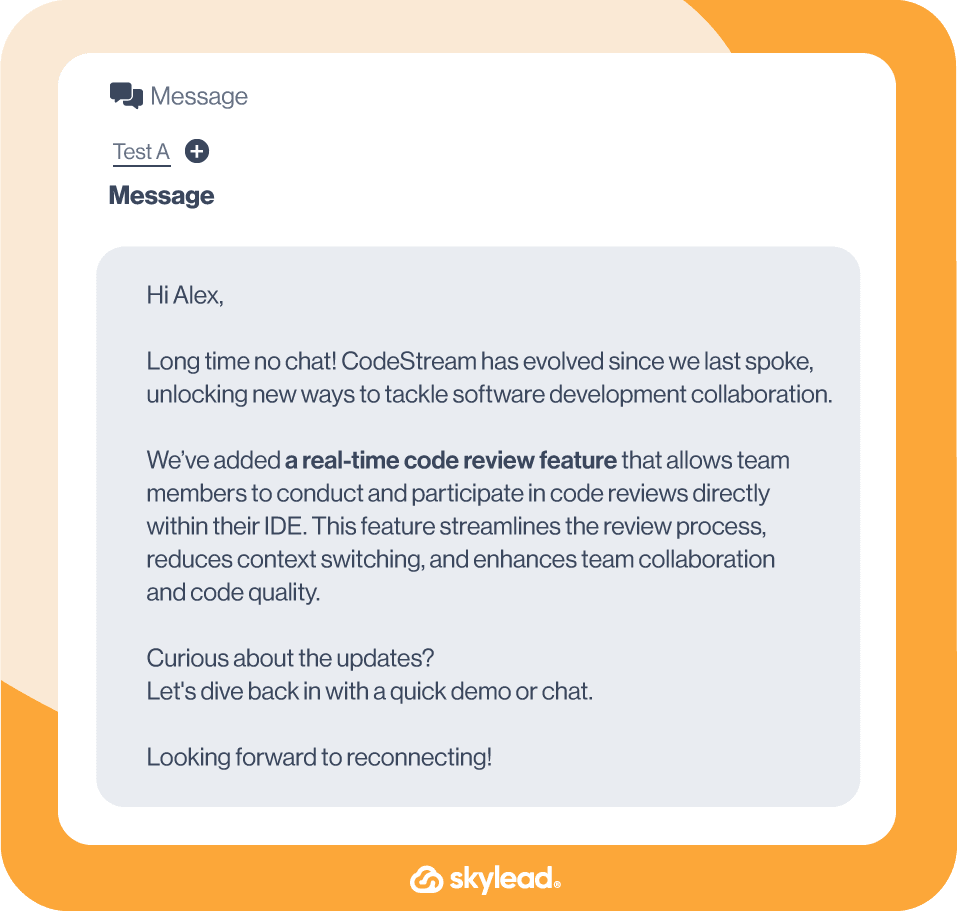
Email message
Subject: A lot has changed at {{product/Service}}! Let’s catch up ☕
Hi {{firstName}},
It's been a while! Since our last conversation, {{product/Service}} has grown, offering new {{benefit}} for {{challenge}}.
Up for a brief update? A quick chat or demo could spark new ideas.
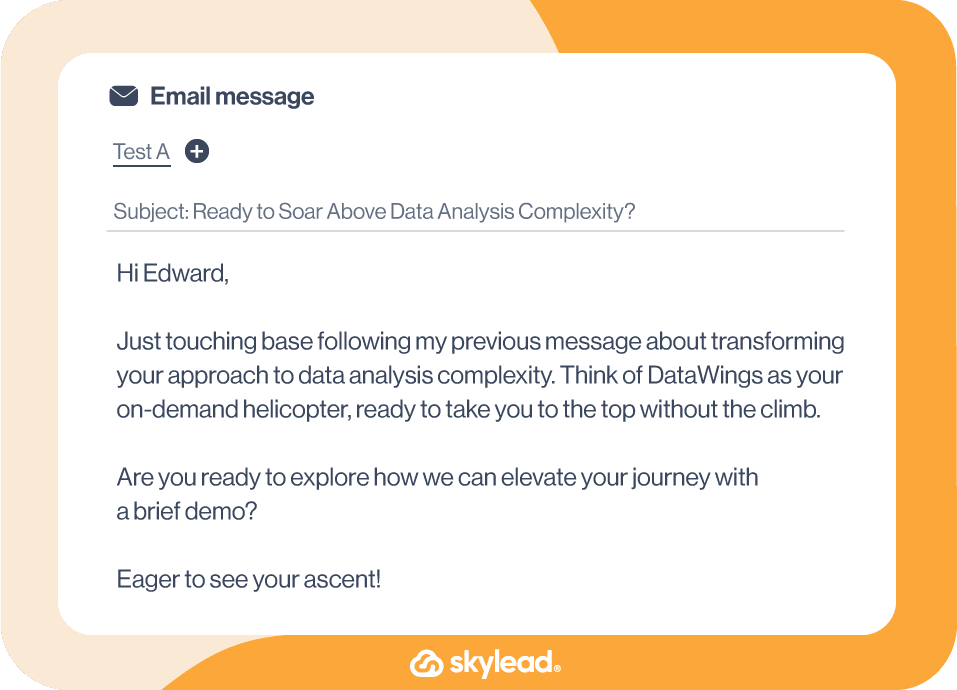
Best outreach sequence examples
Enough theory. Let’s get to the actual social proof – a section where we show you our best outreach sequences that have been tested and optimized to perfection to produce great outreach results.
Given that we believe that multichannel outreach is the way to go, we’ll show you 4 of our sequence templates, which are sure to bring results. All you need to know about them is that our Head of sales, Andrea, closed 50+ meetings while using them! ✨
1. Reach out to leads who reacted to a LinkedIn post of an industry expert
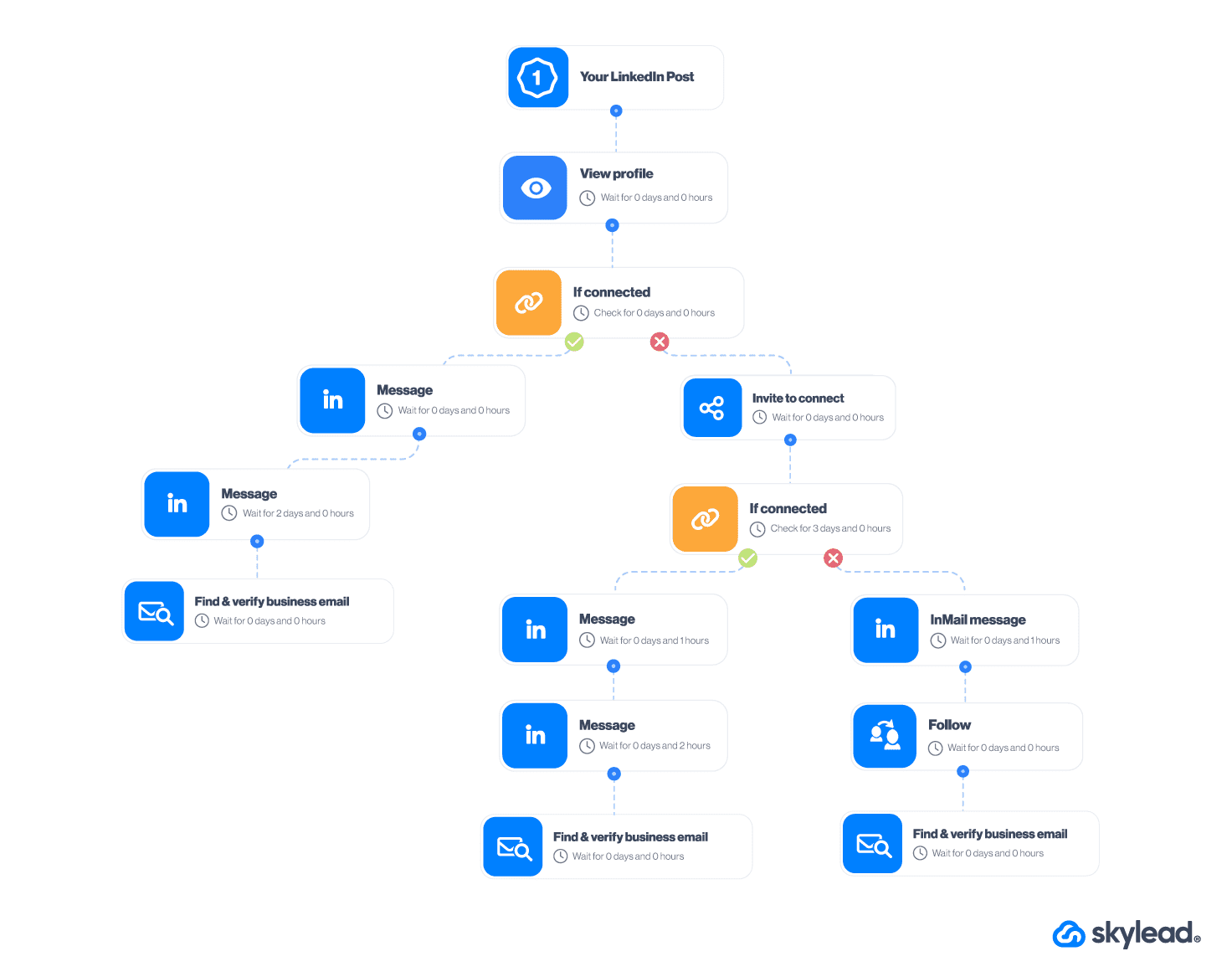
In this outreach sequence, we’ve used a combination of educational and conversion messages. Let’s look at the stats:
- 76% acceptance rate
- 35% reply rate
- 85% open rate
The sequence works because we used both LinkedIn and email and exhausted all communication channels to get to our prospects in any case. If you’re trying to reach people who reacted to someone’s LinkedIn post, the presumption is that you’re probably not connected to them.
We’re using InMails because, from our experience, people generally respond better to them. If you can send them for free, without spending your InMail credit, even better. The Find & verify email feature is here to reach prospects by email if they’re not as responsive on LinkedIn. Email is important in outreach. In fact, 77% of B2B buyers prefer to be contacted by email.
To see template messages, click here.
2. Target specific group members
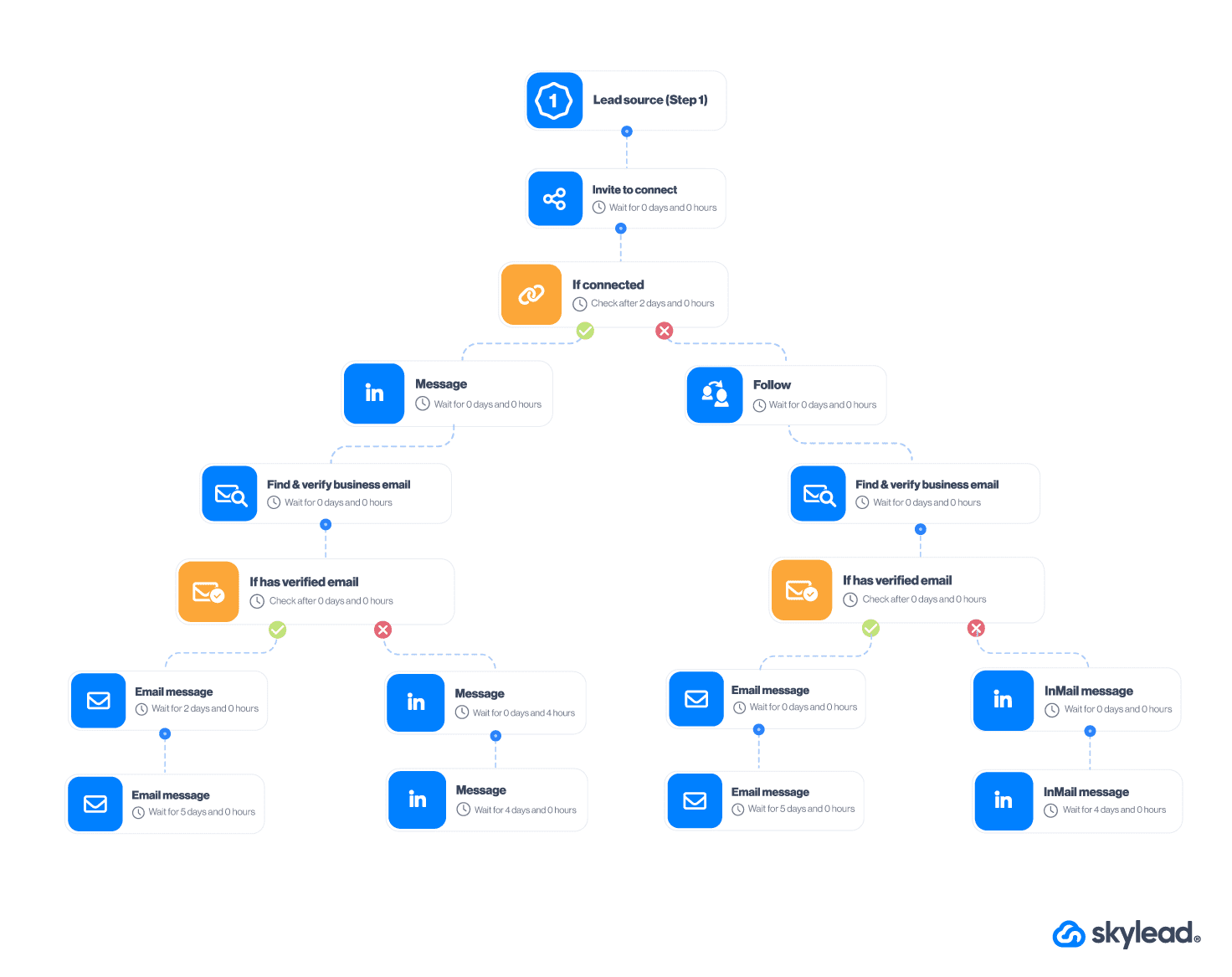
This particular sequence landed many new users, and our sales team got to book more meetings than usual. We’ve used follow-up, engagement, and conversion messages and utilized both communication channels. Here are the results:
- 53% acceptance rate
- 27% reply rate
- 73% open rate
Targeting specific group members means that we are looking for decision-makers and we want to reach them faster. You can do this by using Sales Navigator search results with the Group members filter. In the sequence we’re using the If connected condition for LinkedIn to cover all leads from our lead source. Then, if they’re not responsive on LinkedIn, we find their double-verified email address and try reaching them there.
To see template messages, click here.
3. Approach people who checked out your website
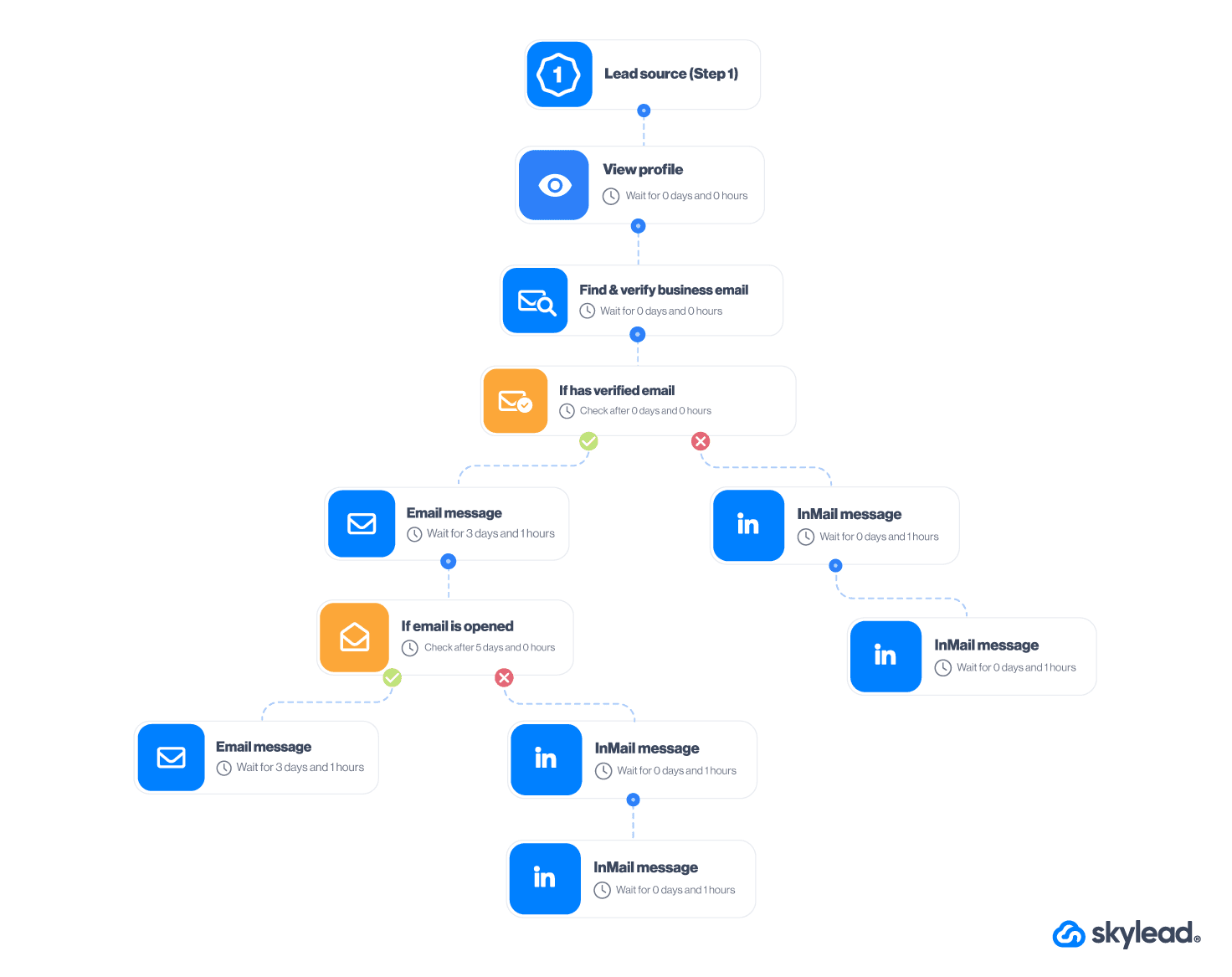
Marketers, behold! A sequence that will target people who stumbled upon your website and need a little nudge to take action. If you're using a 3rd party tool on your website that can tell you what company visited your website, you can easily find those people on LinkedIn and reach out. Let’s get right into the stats:
- 43% acceptance rate
- 23% reply rate
- 71% open rate
In this sequence, our sales team used educational and engagement messages to spark additional interest and give social proof and more information to prospects already interested in your product/service. We also opted for a multichannel approach that works every time!
To see template messages, click here.
4. Educational sequence with a focus on email
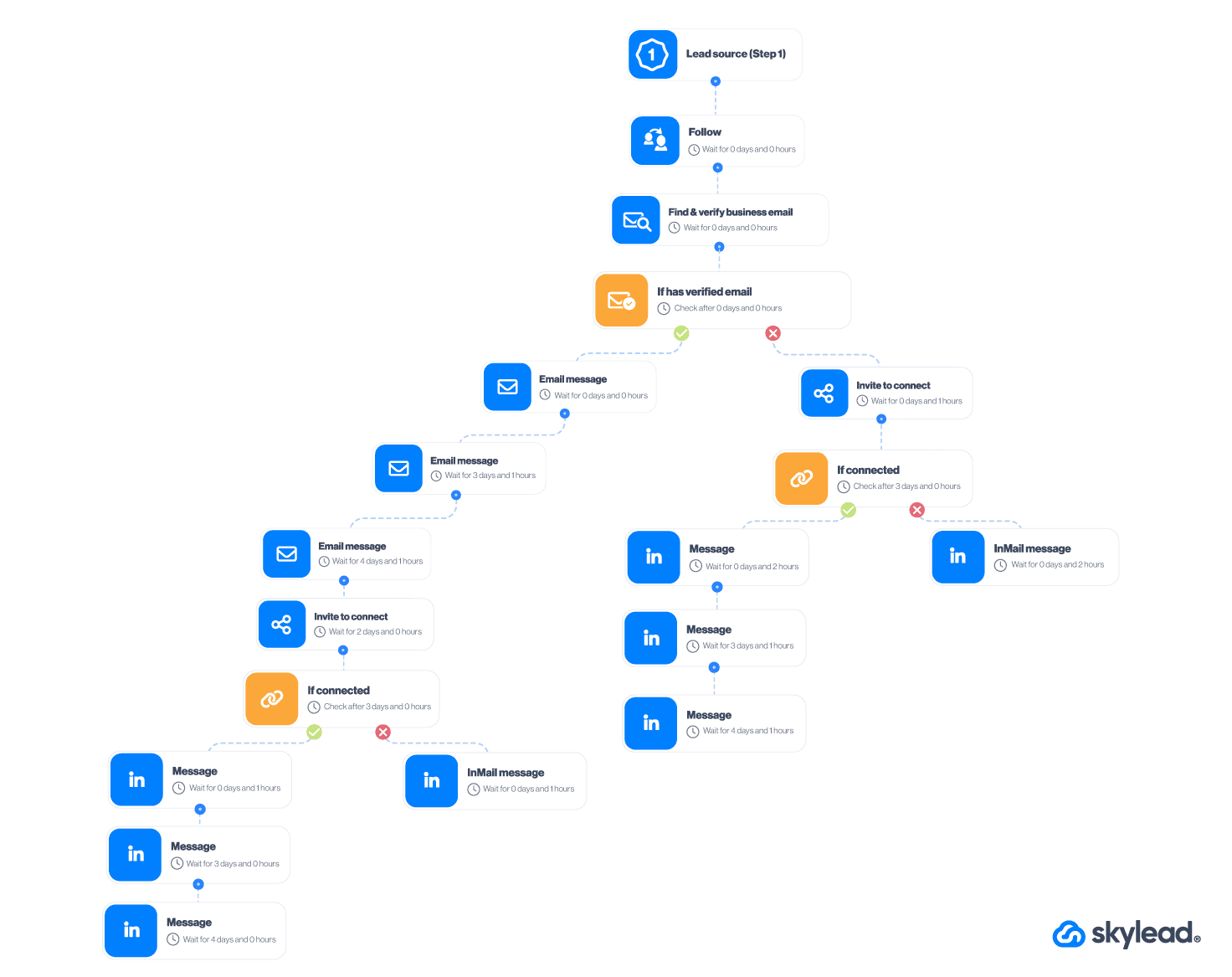
This sequence is part of our free trial period and is also available to all Skylead users. Our sales team made this template to show you how to engage with your target audience and get them hooked to your product/service with carefully crafted messaging and tone.
We’ve used educational and engagement message types, focusing on email, but also using LinkedIn as the other communication channel. Here are the stats:
- 63% acceptance rate
- 41% response rate
To see template messages, you need to register for a 7-day free trial with Skylead.
Outreach sequences: Best practices
After testing and experimenting with different approaches, we’ve formed a list of best practices we always keep in mind when creating outreach sequences. Let our experience serve as a guide for you to create the best outreach sequences. 👇
Use a multichannel approach
What if we told you that 58% of people check their emails first thing, and 14% check social media? This statistic just proves that using two or more communication channels is a must in outreach. We’ve said it once and will say it again: the multichannel approach is the best way to go for higher response rates and faster overall results.
Automate outreach
Businesses that automate outreach campaigns can improve their response rate by a whopping 250%. If your goals are reaching a larger audience or you just want to save time on manual outreach and focus on building and nurturing relationships with prospects, outreach automation is the best solution for you. Plus, a great perk is faster and better results, too. 😉
Add a catchy subject line
Did you know that creating a catchy subject line is directly linked to a higher open rate? A good subject line combined with pre-header text is what helps prospects decide whether they will open and read your email.
Our best advice would be to keep it short, simple, and around 55-60 characters (under 30 characters if you want to stand out in mobile inboxes). Regarding emojis, our research suggests that you should use 1 emoji per subject line. Also, do not put emojis instead of words to avoid confusion.
Personalization
In this day and age, if you want to stand out online, you need to personalize your approach. If you create tailored messages, emails, and follow-ups and then add visual elements to the mix (Skylead’s Image & GIF personalization), you’ll surely get a higher response rate. In fact, up to 63%, to be exact.
Keep it short
No prospect wants to read a huge message with a standardized template approach. If you plan on creating an effective outreach sequence, you need to be concise and to the point. Otherwise, your message will get lost in your prospects’ inboxes with no trace.
However, if you don’t get a yes the first time around, creating a strong follow-up message after no response can up your chances of success. In this case, the same rules apply - keep your messages short, but with each one, add more value and personalized elements.
Relevant value proposition
Each message you craft and send in an outreach sequence should bring value to your prospect. Once you gather information about your target audience, make sure to find relevant touchpoints and spread them evenly across your sequence. With each message, there needs to be more value. You need to tell your prospects that your offer is precisely what they need.
Pro tip: Andrea, our Head of sales, says that in sales emails, it’s never about you. It’s about the prospect and their problems that can be solved only with your solution and your solution.
Include social proof
In outreach, it’s all a numbers game. This means that adding certain bits of proven information, results, or statistics will spark more interest with prospects. Link a case study, or add 1 or 2 sentences to your outreach message to add social proof to your outreach.
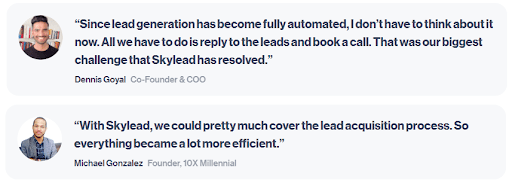
Call-to-action (CTA)
Our sales team told us to tell you that when creating calls to action, you need to think about creating the perfect environment for your prospect to take the desired action. Naturally, your entire message should build up to this closing moment, the so-called CTA. To avoid confusion, use just one prompt instead of a couple. Keep their focus through the message body and then add the CTA.
From our experience, a good CTA should be:
- simple
- straightforward
- clear
Determine the timeframe of the sequence
In outreach, as in life, timing is everything. Determining the duration and the spacing between messages is equally important as the messages. If you send messages too often, they’ll be considered spam, but the sequence won't be successful if you don’t contact them often enough. It’s all about balance, so make sure to space out your outreach messages anywhere from the standard 2 to 5 business days.
A/B testing for optimization
Not sure if your content is good enough? No worries. A/B testing, also known as split testing, is here to help with constant campaign improvement. We advise you to incorporate frequent A/B tests into your outreach sequence strategy to get better results faster. Make it a habit to always look into better ways of reaching out to prospects.
Frequently asked questions
How does one tailor outreach sequences for different industries, such as tech versus healthcare, to ensure relevance and higher engagement rates?
Tailoring outreach sequences for different industries involves researching industry-specific pain points, language, and trends. For tech, emphasize innovation and efficiency; for healthcare, focus on compliance, patient care, and privacy. Customization increases relevance and engagement by addressing specific needs and interests of the target audience.
Can the effectiveness of an outreach sequence vary by geographical region, and if so, what adjustments should be made to cater to different cultural preferences?
The effectiveness of outreach sequences can indeed vary by geographical region due to cultural and time differences. To adjust, incorporate local time, business etiquette, language nuances, and cultural norms. Understanding regional communication preferences and holidays can also enhance the personalization and effectiveness of the outreach.
What are the long-term impacts of using these outreach sequences on brand reputation and customer relationships, especially in cases where recipients might perceive the outreach as spammy?
Long-term impacts of using outreach sequences on brand reputation and customer relationships depend on execution. If perceived as spammy, it can harm reputation and deter potential customers. Conversely, personalized, value-driven outreach can enhance brand perception, foster trust, and build lasting relationships, highlighting the importance of customization and relevance.
Ready to put these best outreach sequences to use?
Of course you are! Now that we covered everything you need to know about creating the best outreach sequences, it’s safe to say that if you follow these instructions, you are well on your way to success with your outreach efforts. So, let’s review what we’ve learned so far:
- Using automation tools in outreach saves time, boosts results, and gives you more time to focus on building better sequences and nurturing relationships with leads.
- Using a multichannel approach, which means two or more communication channels, is key to a faster and more effective outreach.
- Personalization is the key to higher response rates.
- Catchy subject lines are directly related to higher open rates.
- A clear CTA leads to better click-through and response rates.
- Strategic timing in outreach sequences improves overall results and affects all relevant metrics.
- By combining relevant content with personalized communication, we build trust and interest.
So, what’s the next step? Well, all you need now is the right automation tool to assist you in creating the best outreach sequences and building successful campaigns that bring jaw-dropping results. This is where Skylead comes to the rescue. You can register for free, start your 7-day free trial, and begin creating the best outreach sequences out there! Let the outreach begin! 💥
Creating the perfect call to action (CTA) for your email can be tough. It can ruin your outreach efforts or skyrocket your conversion.
In other words, if your call to action isn’t compelling, clear enough, or doesn’t resonate with the overall email message, it will go over your prospect’s head. As a result, your lead won’t perform the desired action, and you will lose that lead or have to work twice as hard to convert them.
Thus, in this article, we are diving deep into the meaning and importance of CTAs in emails and showing you how to craft a perfect CTA. In addition, we will provide you with the call to action examples that you can use as inspiration for your outreach.
What is a call to action?
A call to action (CTA in short) is a phrase that serves as a directive for target groups or leads to perform the desired action.
As a motif used for sales and marketing efforts, a call to action usually shows up in the ads, emails, websites, and other types of content geared towards the target group. For example, you’ve probably seen the following phrases in the ads a thousand times by now:
- Watch;
- Shop Now;
- Buy;
- Download, etc.
Yup, those are all CTAs.
Now, a call to action can manifest in distinct forms, such as:
- A button on a landing page or ad;
- Hyperlinked text on a landing page or email;
- Long, plain text, often found in an email;
- As a short sentence that acts as a preface to another call to action.
A perfect call to action helps you capture leads, directly influences and improves conversion, and drives other desired actions depending on the goal.
However, if we talk about B2B sales emails, crafting the call to action is more complicated than B2C. Why? Because you cannot just link the word Buy at the end of the email and expect people to... Well, buy it. In other words, you need to take an entire buying experience (longer than B2C one), sales funnel, and your message into consideration.
And yes, catchy email subject lines and attention-grabbing opening lines will help you increase the open rate and get your emails to be read. Still, a call to action combined with a well-crafted message will directly impact your desired action.
Email call to action types
Before jumping into actionable tips that you can use to craft the call to action for your email, let’s first look at what email call to action types are at your disposal. Instead of analyzing B2C CTAs, we will focus only on B2B calls to action that salespeople can use in emails.
1. Sign up
This call to action type serves as a little nudge. It is often used for Freemium services, so leads can understand what the product is all about. The good news is that this type of action doesn’t cost a person anything, and it is easier to achieve than a demanding conversion, such as starting a subscription.
2. Resource
Using this CTA, you are offering your potential clients the resource you think they will benefit from the most. In addition, the resource is often free, and if you get them to open your email and if you hit the right pain point with your message, you can expect a high resource visit rate.
3. Discovery
From time to time, you will need to send more information about your product/service. Luckily, you, a well-skilled salesperson, already have a special landing page that your trusted marketing team created for you that you can send out.
4. Schedule a meeting/demo
This is a type of CTA that you can use after the lead has responded to your cold outreach.
5. Free trial
Responding to this call to action, leads will have the opportunity to test out your product or a service, before deciding whether or not you wish to commit.
6. Subscription started
After the leads have tested your product, you will try to nurture them to start the subscription. In this case, you will use said CTA.
7. Follow-up
This Call To Action type serves as a reminder to the prospect they didn’t respond to your email or didn’t do the necessary action.
8. Review
If you wish to ask your customers to leave a review on a listing website, you will use this CTA.
9. Event promotion
Using this call to action, you can gather attendees for the upcoming special event, such as webinars, training, courses and gatherings.
Call to action (CTA) performance metrics
Crafting and using the right Call To Action in your emails can be effective. However, how would you know if the certain CTA actually worked and brought you the results? Why, with your trusted metrics, of course.
In addition, depending on the type of conversion you wish to get, the metrics will differ. Thus, here is a table with metrics corresponding to the call to the action type.
| CTA Type: | Metrics: |
| Sign up | Number of signups; Signup rate per month |
| Resource | Number of reads/views |
| Discovery | Number of landing pages visits |
| Schedule A meeting/Demo | Number of meetings scheduled and held per month |
| Free Trial | Number of Free Trials started |
| Subscription Started | Number of subscriptions started, LTV, Churn rate |
| Follow up | Response rate |
| Review | Number of reviews given |
| Event Promotion | Number of attendees per event |
Finally, do not forget to use UTM parameters in your emails for the metrics that include website data.
Tips to create call to action
Like CTA in marketing, Calls To Action in sales emails need more thinking through, as well. In other words, they need to be easy on the eyes, clear, comfortable for the prospects to say yes to, and much more. Thus, here are the tips that will help you craft the best CTAs in emails that work.
1. Email message and call to action in synergy
We cannot talk about Call To Action and not mention your entire email message. Email messages and CTAs go hand in hand, and you cannot expect one to work without the other. After all, your email needs to help your prospect accomplish their goal or solve the problem.
So, you need to specify the pain point or goal you wish to address. Once defined, only then start crafting your CTA accordingly.
Example:
Let’s say you wish to book a meeting with the prospect and share how your service can help them precisely. Thus, your email and CTA can go something like this:
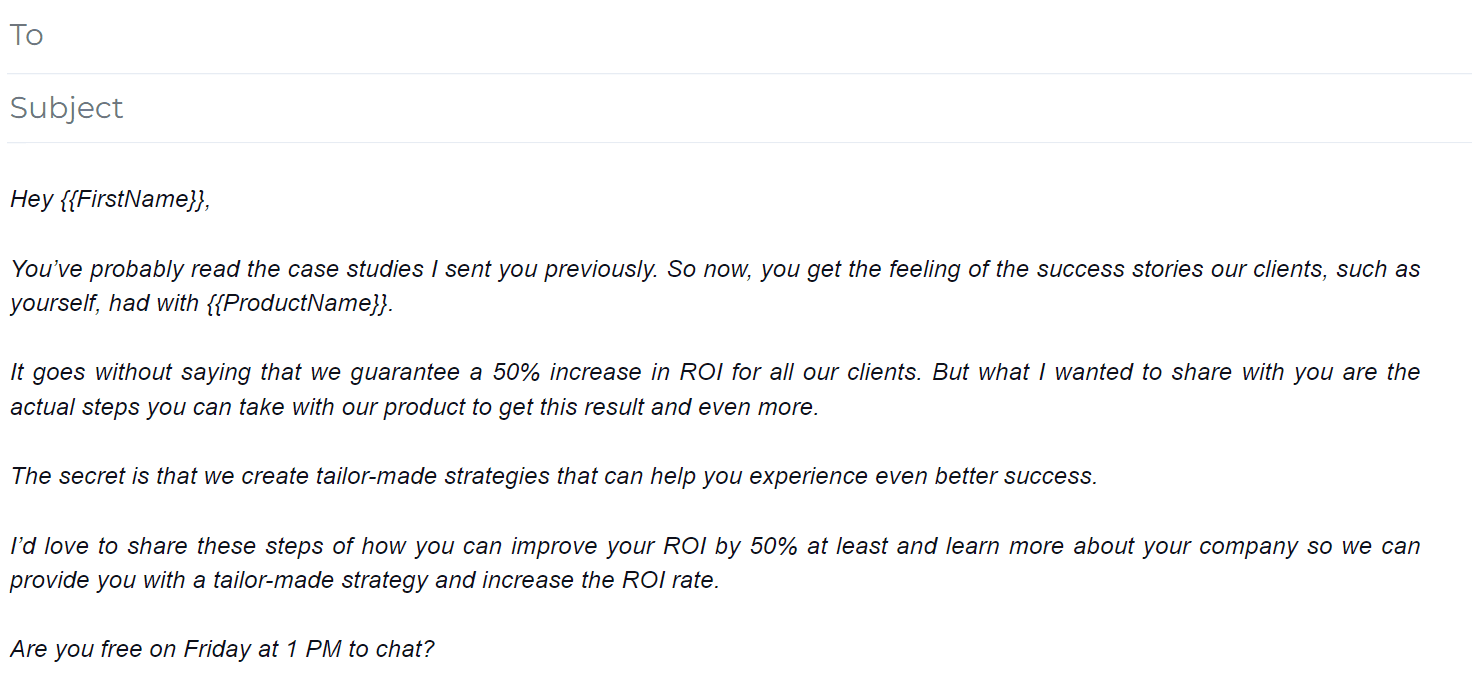
So don’t be the one who cannot see the forest from the trees and expect your CTA alone to work. Define your pain point message, and work on your Call To Action so they match.
Additional tip: You should always write your email message around your CTA. Let's say, for example, the idea is to book a meeting. Then you should write the email that gives the reason to the prospect to take that call.
2. Write call to action as a part of conversation
While we are still on the subject of an email message and CTA synergy, let’s glance at the previous example one more time.
Do you notice that we didn’t use a Call To Action such as Book A Meeting at the end of the email? Standard CTAs that you can find on landing pages or ads do not work well in sales emails as they create a sense of abruption in communication.
So we created Call To Action as a seamless part of communication. The reason is that these CTAs note better performance in sales emails. Why? The answer to this question is because of the social selling principles.
3. CTAs that are easy to say yes to
Sometimes getting the conversion is tough, and prospects often feel that you ask too much of them. This happens if we talk about conversions, such as starting a free trial or service subscription, in particular. So, the objective is to always craft your Call To Action as defined as possible.
Examples:
a. Does Thursday at 2 PM work for you?
b. Can you give me the contact information of a person who I can talk to about…?
c. If you are interested, just respond with “Yes” and I will send you the free audit of your business.
4. Use one clear call to action per email
Nowadays, we have a lot on our minds, and we process a large amount of information per day. So naturally, our attention span got shorter over the years. This goes with your prospects as well.
Thus, when writing an email, use only one Call To Action. Using multiple CTAs is one of the biggest email mistakes and can confuse your prospects. In addition, it can make them unaware of the next step and cost you the desired conversion.
5. The power of words
If, for example, we say I love your work, or I like your work, which one do you think is more effective? You are right - the first one is. You see, words alone bear meanings that can impact us emotionally and mentally. Therefore, choosing the spot-on words for your CTA can really make a difference in how your prospects feel.
So, to make your Call To Action more impactful, choose more uplifting words. In addition, always read your CTA and check how you feel afterward, as this way, you will get a sense of how your prospects will feel. Here are a couple of examples.
| Instead… | Use This. |
| Read how our clients managed to… | See how others in your position managed… |
| Join our webinar to learn about… | Seize the opportunity to pump up your SDR skills with our webinar. Join us! |
| If you are interested to… | If your answer is “Yes, I want it!”... |
6. Use first-person POV when possible
Personalization is everything when it comes to sales and marketing. If you are already personalizing your email outreach with variables such as name, occupation, or custom introduction, you might as well do it with your CTAs. Still unsure? Here is our leverage:
Company ContentVerve experienced a 90% increase in click-through rate by using the first-person point of view. They managed to do it by using the phrasing “Start MY free 30-day trial” instead of “Start YOUR free 30-day trial” *.
The reason why first-person point of view works is that your prospect will receive more personalized communication and will feel more connected to your brand.
7. A/B test your call to action
A/B testing is the only proof of outreach effectiveness, whether we talk about subject lines, messages, or opening lines. Thus, naturally, testing applies to the Call To Action as well.
In addition, if you use a sales engagement tool, such as Skylead, you can set up your email outreach testing as easily as 1, 2, and 3. Simply add your sequence steps, and message variants.
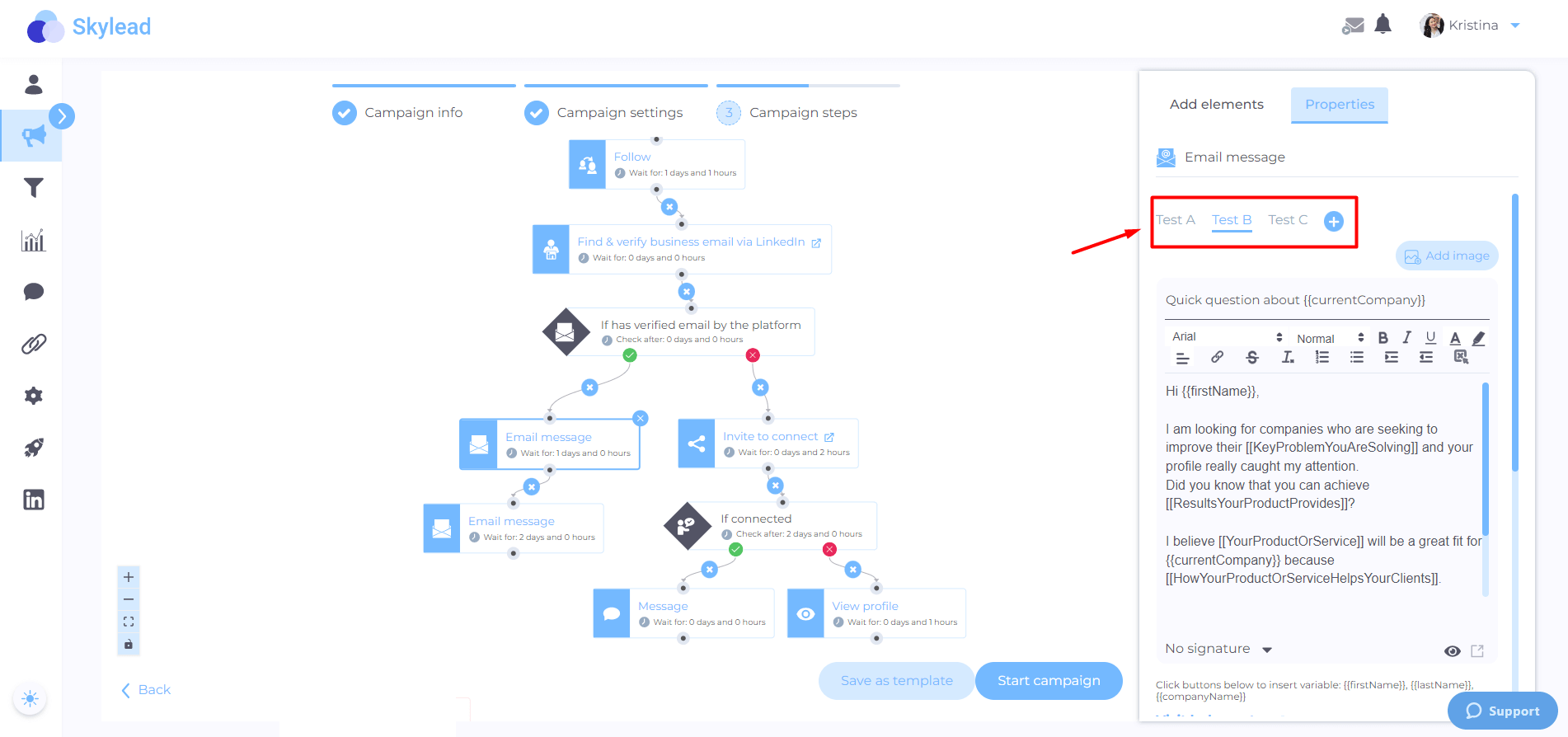
Once you launch the campaign and results start coming in, you'll see the step-by-step analytics showing which variant worked best.
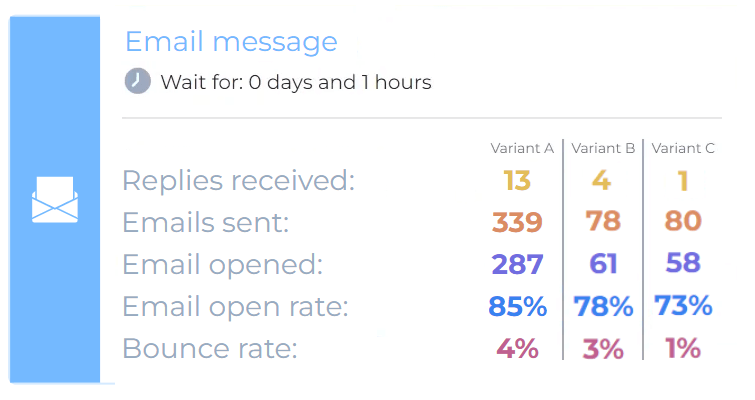
Extra call to action examples
Now that you know how to craft your perfect Call To Action, let’s go over additional examples and reasons they work.
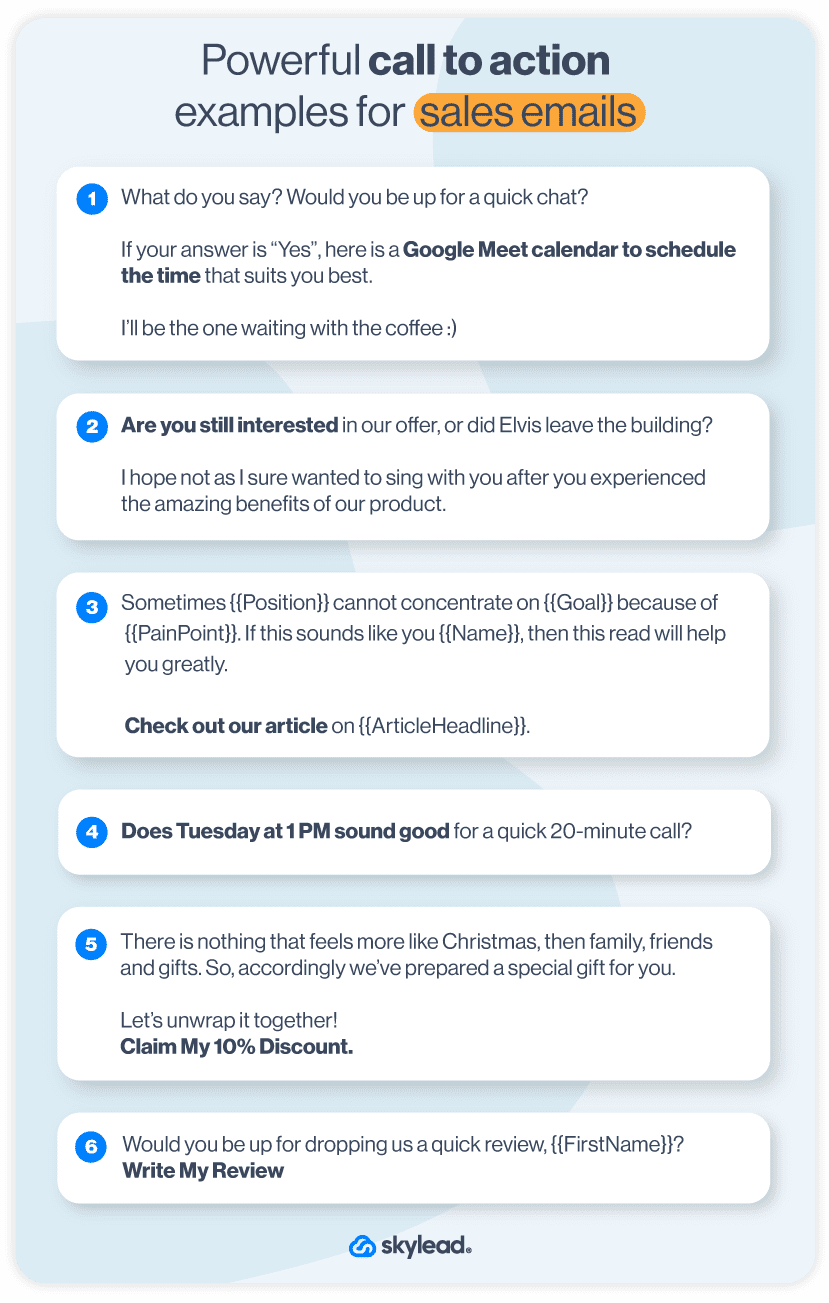
The one with the calendar
“What do you say? Would you be up for a quick chat? If your answer is “Yes”, here is a link to schedule the time that suits you best. I’ll be the one waiting with the coffee :)”
So, we have a couple of benefits here. Firstly, this type of call to action is an easy win since your prospects are one click away from scheduling a call when it suits them most. Secondly, the other perk is that there is no back and forth communication if either party is not available at the other one’s proposed date. Lastly, speaking of “the words that have power’ implying the answer, such as Yes, will give a more positive connotation to the email.
As mentioned before, just be sure to give them a valid reason why they need to take the meeting, so by the time they reach your Call To Action, they will actually wish to take the meeting with you.
Additional tip: This CTA simply calls for a personalized image or a GIF at the end of an email. In other words, you can place your image holding a coffee cup with your lead’s name on it.
Stir the CTA pot with a pinch of the theme
Everybody loves when they notice a specific theme woven into the email that is tailor-made just for them. Hence, the best way you can do it is to find the idiom or a topic and build your Call To Action around it.
As an example, here is our idea for salespeople:
"Are you still interested in our offer, or did Elvis leave the building? I hope not, as I sure want to sing with you after you experience the amazing benefits of our product."
In addition, this particular Call To Action can be a good idea for the follow-up when the prospects haven't responded yet, and belong in the Free Trial or Subscription pipeline stage.
Call to action examples that offers empathy
Sometimes prospects may not know what exactly they are looking for unless you point it out. By describing the actual pain point and offering a solution immediately, you show your prospects that you are here to help.
Here are the two CTA variations you can use to share a resource or schedule a call.
a. Sometimes sales people cannot concentrate on closing the deals because of spending too much time manually searching for the prospects.
If this is you, then this read will help you greatly.
Check out our article on 3 things you should automate in your outreach.
b. Sometimes sales people cannot concentrate on closing the deals because of spending too much time manually searching for the prospects.
If this resonated with you Debbie, then, we need to talk. I can share a couple of tips you can apply to reduce manual work.
Does Wednesday at noon work for you?
Short and precise call to action example
If for some reason, you do not have a meeting scheduler, this CTA is for you. It is short and detailed since it offers the exact date and time.
I’d love to hop on a meeting and chat about how we can work together. Does Tuesday at 1 PM sound good for a quick 20-minute call?
Specifying the exact CTA with time and date is always a win. However, there are two extra cherries on top of this CTA cake. Firstly, you show that you care about your partnership.
Secondly, there is any indication, a promise if you will, of how long the meeting will last. In other words, everyone likes short calls, especially the decision-makers. Also, if the future meeting lasts longer than 15 minutes, well then, things are looking up to close that deal.
Checking the status CTA
If you wish to throw a ball in your prospect’s courtyard, you can do so by asking them what is the next step on their behalf. As opposed to asking whether they will do something, you are asking them what they are going to do. Here are the examples:
a. Will your next action be {{Action}}? Or did I get that wrong? Just wanted to check if there is anything else I can help you with.
b. I wish to make the process super easy for you. Is there anything I can do so you can fully make the transition to our product?
By responding, the prospects keep you in the loop, and the conversation will move on. Furthermore, this example is the perfect idea for figuring out what stops them from starting the subscription process. In addition, this can be an example of the conversation-starting CTA as a part of the follow up email after you received no response.
Value exchange call to action example
If, for example, you have churned customers or the leads that never converted, you might want to think about offering a limited-time discount. In this case, you can use CTA such as:
Nothing feels more like Christmas than family, friends, and gifts. So, accordingly, we’ve prepared a special gift for you. Let’s unwrap it together. 👉 Claim My 10% Discount
This Call To Action is motivating for a couple of reasons. Yes, you are offering a discount which can be alluring, but you are also personalizing with a first-person point of view. In addition, by choosing the word Claim and implying friendship, you show that something belongs to them. And it won’t take long until they take it.
Furthermore, you can create a similar Call To Action if you wish to ask your customers to write a review for your website or leave it on a listing website. It can go, for example, like this:
We value your opinion, and it would be amazing to hear your voice in the form of a review.
As a small gesture for your effort, we have prepared a $25 Amazon gift card that you can spend on your friends and family.
What do you say?
Would you be up for it? 👉 Write My Review
In conclusion
It is important to look at your Call To Action as a part of the bigger picture. For example, the composition of still life entirely depends on beautifully painted fruits, flowers, and glasses. Thus the effectiveness of the entire email is decided by its subject, opening line, message, and CTA and can influence your overall lead generation. When perfectly crafted together, conversion is imminent.
Once you understand this, you can easily follow the tips for writing the perfect Call To Action:
- Write Email messages and Call To Action in synergy;
- Weave CTA as part of the conversation;
- Create Call To Action that is easy to say Yes to;
- Use one and clear Call To Action;
- Choose your words in CTA carefully;
- Use the first-person point of view where possible;
- A/B test everything.
With these tips and examples mentioned above, your Call To Action will point out what is the most important to your prospects. In addition, your CTA will give your prospects the reason for conversion.
Now, go ahead and create your amazing CTAs!
P.S. Wish to automate your LinkedIn prospecting, activities of generating leads on LinkedIn, or use multichannel outreach? Drop by and try out Skylead for free!
